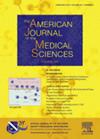Sodium tungstate (NaW) decreases inflammation and renal fibrosis in diabetic nephropathy
IF 2.3
4区 医学
Q2 MEDICINE, GENERAL & INTERNAL
引用次数: 0
Abstract
Background
Diabetic Nephropathy is one of the most severe complications of Diabetes Mellitus and the main cause of end-stage kidney disease worldwide. Despite the therapies available to control blood glucose and blood pressure, many patients continue to suffer from progressive kidney damage. Chronic hyperglycemia is the main driver of changes observed in diabetes; however, it was recently discovered that inflammation and oxidative stress contribute to the development and progression of kidney damage. Therefore, it is important to search for new pharmacological therapies that stop the progression of DN. Sodium tungstate (NaW) is an effective short and long-term antidiabetic agent in both type 1 and type 2 diabetes models.
Methods
In this study, the effect of NaW on proinflammatory signalling pathways, proinflammatory proteins and fibrosis in the streptozotocin (STZ)-induced type 1 diabetic rat model was analysed using histological analysis, western blotting and immunohistochemistry.
Results
NaW treatment in diabetic rats normalize parameters such as glycemia, glucosuria, albuminuria/creatinuria, glomerular damage, and tubulointerstitial damage. NaW decreased the proinflammatory signaling pathway NF-κB, inflammatory markers (ICAM-1, MCP-1 and OPN), profibrotic pathways (TGFβ1/Smad2/3), reduced epithelial-mesenchymal transition (α -SMA), and decreased renal fibrosis (type IV collagen).
Conclusion
NaW could be an effective drug therapy for treating human diabetic nephropathy.
钨酸钠(NaW)可减少糖尿病肾病的炎症和肾脏纤维化
背景:糖尿病肾病是糖尿病最严重的并发症之一,也是全球终末期肾病的主要病因。尽管有控制血糖和血压的疗法,但许多患者的肾脏仍在不断受损。慢性高血糖是导致糖尿病病变的主要原因,但最近发现,炎症和氧化应激也会导致肾脏损伤的发生和发展。因此,寻找新的药物疗法来阻止 DN 的进展非常重要。在 1 型和 2 型糖尿病模型中,钨酸钠(NaW)都是一种有效的短期和长期抗糖尿病药物:本研究采用组织学分析、Western 印迹和免疫组织化学方法分析了 NaW 对链脲佐菌素(STZ)诱导的 1 型糖尿病大鼠模型中促炎信号通路、促炎蛋白和纤维化的影响:结果:NaW治疗糖尿病大鼠可使血糖、糖尿、白蛋白尿/肌酐尿、肾小球损伤和肾小管间质损伤等指标恢复正常。NaW减少了促炎信号通路NF-κB、炎症标志物(ICAM-1、MCP-1和OPN)、坏死通路(TGFβ1/Smad2/3),降低了上皮-间质转化(α -SMA),并减少了肾脏纤维化(IV型胶原):结论:NaW 是治疗人类糖尿病肾病的一种有效药物疗法。
本文章由计算机程序翻译,如有差异,请以英文原文为准。
求助全文
约1分钟内获得全文
求助全文
来源期刊
CiteScore
4.40
自引率
0.00%
发文量
303
审稿时长
1.5 months
期刊介绍:
The American Journal of The Medical Sciences (AJMS), founded in 1820, is the 2nd oldest medical journal in the United States. The AJMS is the official journal of the Southern Society for Clinical Investigation (SSCI). The SSCI is dedicated to the advancement of medical research and the exchange of knowledge, information and ideas. Its members are committed to mentoring future generations of medical investigators and promoting careers in academic medicine. The AJMS publishes, on a monthly basis, peer-reviewed articles in the field of internal medicine and its subspecialties, which include:
Original clinical and basic science investigations
Review articles
Online Images in the Medical Sciences
Special Features Include:
Patient-Centered Focused Reviews
History of Medicine
The Science of Medical Education.

 求助内容:
求助内容: 应助结果提醒方式:
应助结果提醒方式:


